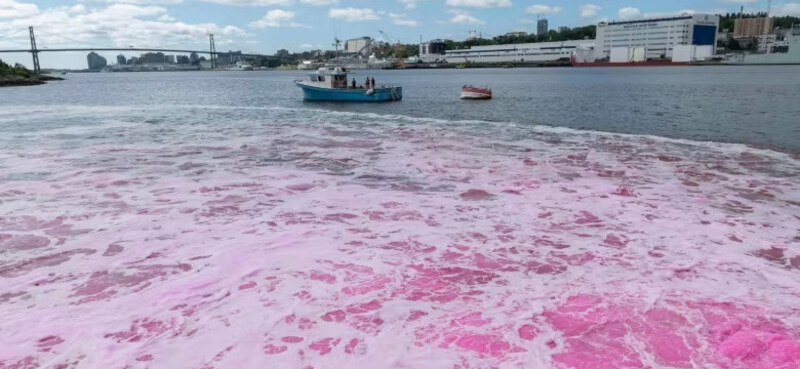Waters in Nova Scotia were glowing pink on Thursday, and no, it wasn’t a viral marketing stunt for Pepto-Bismol or an alien menace that crash-landed into the sea.
What happened: Researchers from Dalhousie University and greentech company Planetary Technologies dumped 500 litres of pink fluorescent dye into the waters around Halifax Harbour in Dartmouth to see how far the dye would travel into the Atlantic Ocean.
Cool…why? It’s the first phase of a study to learn if the ocean could be used to reduce atmospheric carbon.
- The ocean holds 90% of the Earth’s CO2 and can safely store it thanks to its alkaline nature.
This fall, researchers plan to add an alkaline solution into the harbour, positing that increasing the alkalinity of ocean waters could help them store even more carbon.
- Using boats, drones, and underwater robots, the study will track the pink dye to see where and how it spreads, giving them an idea of how the alkaline solution will travel.
Why it matters: In addition to reducing carbon emissions, removing carbon from the atmosphere (as much as 10 billion tonnes annually by 2050 by some counts) is now seen as a necessity in reaching global climate goals. With the long-term viability of current carbon capture and storage solutions still unclear, the ocean could be a big, blue storage facility.
- "Ocean alkalinity enhancement has the greatest potential [for] storing carbon permanently and safely at a scale,” Dalhousie’s Dr. Katja Fennell told CBC.
Zoom out: The study is one of the first (if not the first) of its kind, and will go a long way in proving—or disproving—the feasibility of this idea.—QH
